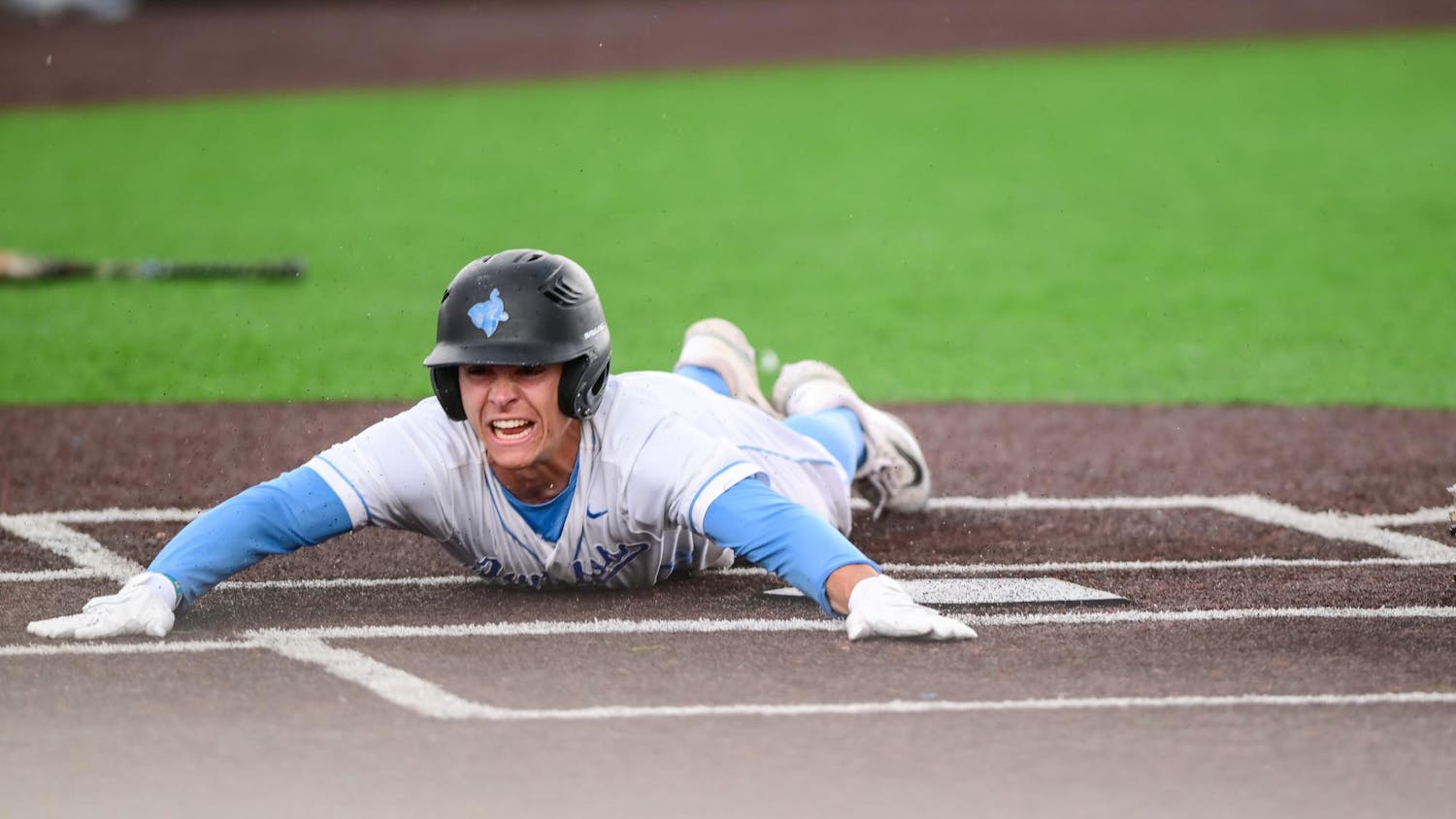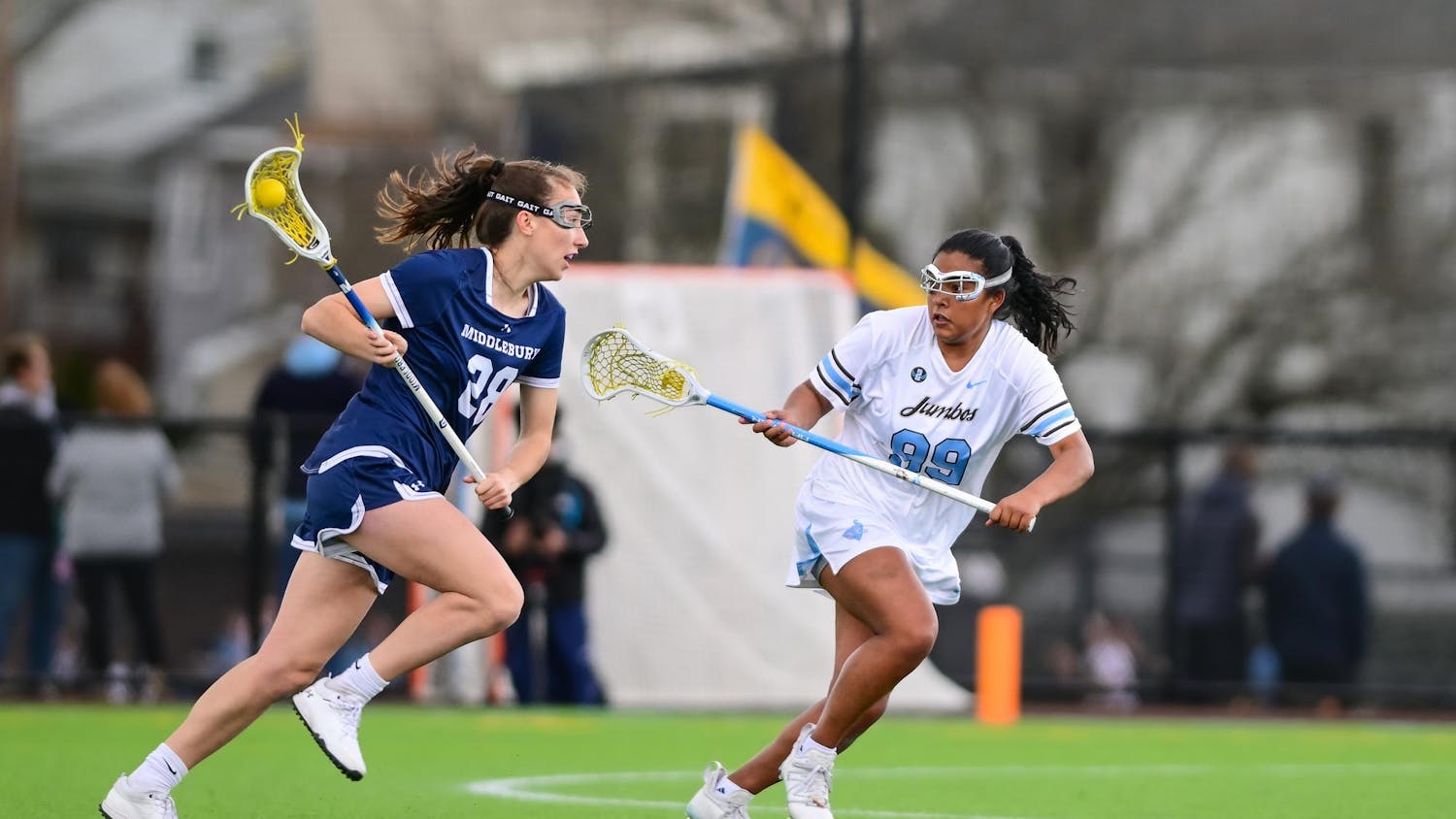The colleges that make up the New England Small College Athletic Conference have more to offer than just large financial endowments, a liberal arts education and an Ivy League inferiority complex. In fact, this Division III conference contains some of the most interesting and historic athletic programs in the country. The COVID-19 pandemic may have forced the NESCAC to cancel its fall 2020 season, but its student-athletes are back and ready to compete. Below is a quick rundown of the identity and expectations for each NESCAC school.
Amherst College
The Amherst Mammoths are the smallest of the “Little Three” colleges, which also includes Williams and Wesleyan. Despite its size, 32% of the 1,785 students participate in varsity athletics, while 80% participate in intramural or club sports. Their varsity men’s soccer team will likely pose the toughest threat to Tufts, though the Jumbos beat them in the national championship in 2019. A real powerhouse in the conference, the Mammoths have won 11 NCAA team titles in the past 10 years and 80 individual championships.
Bates College
Boasting 12 Olympians, the Bates Bobcats are one of three NESCAC schools located in the state of Maine. The Bobcats’ women’s volleyball team might surprise fans with a solid season and a playoff run this year. Canadian rower and Bates alumnus Andrew Byrnes was a gold medalist in the men’s eight boat in Beijing in 2008 and won a silver medal in London in 2012.
Bowdoin College
Home of the Polar Bears, Bowdoin College can be found in Brunswick, Maine. Notably, sophomore Emilie Grand’Pierre competed in the 100m breaststroke in the Tokyo Olympics this summer. Grand’Pierre became the eighth Bowdoin Olympian and set a Haitian record with a time of 1:14.82. The Polar Bears also have a competitive women’s volleyball team that reached NCAA Division III tournament quarterfinals in 2019. Founded in 1794, the Bowdoin College Polar Bears have 31 varsity teams and wear black and white when they compete.
Colby College
Rounding out the NESCAC schools in the state of Maine is Colby College, residing the farthest north in Waterville. The Mules’ newest attraction is the Harold Alfond Athletics and Recreation Center), which opened in August 2020. Colby was founded in 1813.
Connecticut College
Opposite of the Mules up north, the Connecticut College Camels are the southernmost NESCAC school, located in New London, Conn. Founded in 1911, the Camels have 28 varsity teams, 424 All-Americans, seven individual national champions and 13 Olympians. Sailing alumna Maggie Shae placed 11th in the women’s 49er FX event at the Tokyo 2020 Olympic Games this past summer.
Hamilton College
The only NESCAC school not in New England can be found in Clinton, N.Y. Hamilton College is New York’s third oldest college and was named after the United States statesman and first secretary of the treasury, Alexander Hamilton. Hamilton College was originally founded as Hamilton-Oneida Academy in 1793 and transitioned to its college status in 1812. The Continentals have 29 varsity teams and 550 athletes that go by the motto, “Know Thyself,” as they sport Buff and Blue.
Middlebury College
Middlebury College has one of the most successful athletic programs in the NESCAC with 101 NESCAC titles and 38 national championships in its trophy cabinet. Both its men’s and women’s soccer teams made a run to the NESCAC Championship in 2019, and the Panthers will look to maintain their dominance in football.
Trinity College
Over the past 70 years, the Bantams have won 26 national championships and recently won three straight NESCAC football titles from 2016–19. They also came in second to Tufts in baseball and softball in the NESCAC Eastern division last year.
Tufts University
What most people call the Alabama of the NESCAC (we share the same mascot animal), Tufts will contend for championships in a great deal of fall sports. The Jumbos’ men's and women's soccer teams are eyeing the NESCAC title, and the women’s volleyball team will look to repeat their 2019 championship. Tufts’ field hockey and women's cross country teams are ranked fourth and fifth in preseason polls, respectively. Don't be surprised if the Jumbos find their way on most of the NESCAC Championship venues this November.
Wesleyan University
The Cardinals hope to come out on top in the struggle of the "Little Three” colleges in the NESCAC. They should expect success this fall with title contenders for their women’s soccer and women’s volleyball teams. The Cardinals will also attempt to repeat their 2019 success in football, when they went 8–1 and won the "Little Three” title.
Williams College
The oldest NESCAC school resides in Williamstown, Mass. — the Williams College Purple Cows, or “Ephs.” Williams was founded in 1793 and is the winner of 21 of the last 23 NACDA NCAA Div. III Directors’ Cups, which is considered to be emblematic of athletic supremacy. Williams excels in sports such as football and women's soccer.






